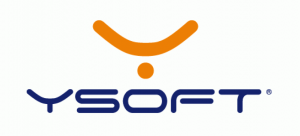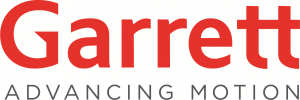Leveraging analytics for superior employee engagement
29.05.2018Company: DXC Technology
Analytics are becoming crucial to every stage of the hiring process, as well as to the entire workforce planning and management cycle. With data analytics, organizations are empowered to attract, acquire, develop and retain top talent. Human resource analytics bring together HR and business data from different parts of the business, including data in social networks, recruiting networks and talent networks. As a result, HR departments are able to address a wide range of challenges, including analyzing attrition, selecting high-performing job applicants, identifying characteristics of high-performing sales and service teams, predicting compliance risks, analyzing engagement and culture, identifying high-value career paths and spotting leadership candidates.
But HR analytics have a real impact only when they are forward-looking and truly predictive in nature. They can then be used to analyze survey data on employee engagement and customer satisfaction to answer such questions as, “Are highly engaged employees also highly satisfied?” Powerful insights can emerge, and these can lead to decisive actions.
While there’s been a lot of excitement about HR analytics (also called people analytics or workplace analytics), many of these solutions have been highly focused on operational reporting — collecting simple metrics such as total headcount, time to hire and retention rates. The challenge has been that, traditionally, all these have resided in independent data sources. For example, core workforce data resides in the primary HR system, talent management data resides in other systems, and indirect workforce costs (such as costs for recruiting and facilities) reside in still other systems. Hence the focus was to report on specific metrics, which could not be truly predictive or prescriptive in nature.
Today, for HR analytics to be truly strategic, HR needs to have a single source for all the workforce data, and the ability to connect the data with business outcomes. For example, it is not enough to measure the retention rate; what really matters is how retention affects the bottom line. It is not enough to measure how engaged your employees are; you need to know how that relates to customer satisfaction.
Fortunately, a major shift is now taking place. After years of talking about the opportunity to apply data to people decisions, companies are finally stepping up, making the necessary investments and delivering truly powerful solutions.
The HR Analytics Maturity Model
A powerful tool exists to help us understand the growing maturity of HR analytics. In 2012, Josh Bersin, a leading thinker in this field, created the HR Analytics Maturity Model (shown in Figure 1) to explain the different levels of HR analytics adoption. His model defines four maturity levels, illustrated by a pyramid in which the base (Level 1) represents the lowest level of maturity, with the highest (Level 4) at the tip.
LEVEL 1: HR REPORTING
At this level, an organization’s HR analytics are focused principally on ad hoc operational reporting, which involves collecting metrics such as turnover ratios, labor costs and training costs. Analytics at this level are reactive to business demands, characterized by data isolation and difficult to analyze.
LEVEL 2: HR EFFECTIVENESS
This level is focused on efficiency and proactive, advanced reporting. In organizations at this level, HR analytics focus on operational reporting for benchmarking multidimensional decision making. Typical metrics include time to hire, cost per hire, absenteeism and HR service delivery scores.
LEVEL 3: PEOPLE OPTIMIZATION
At this level, predictive analytics come into play, and organizations focus on the statistical analyses of people models and other dimensions to understand causes and deliver actionable insights. Level 3 analytics include predictions of employee churn, identification of potential high performers, and training for volume forecasting.
LEVEL 4: BUSINESS OPTIMIZATION
At this level, decisions are integrated with business requirements, and predictive model scenarios are developed for planning, risk analysis and mitigation. These scenarios are also integrated with strategic planning. Analytics at this level include advanced workforce planning and the measurement of employee engagement using both internal and external data.
As organizations work their way up the HR analytics maturity pyramid, they’re likely to encounter several key challenges:
- Level 1 — Siloed, disconnected data and tools. Nearly all organizations are wrestling with massive amounts of both internal and external siloed data, as well as an inability to communicate and share data because of disparate tools.
- Level 2 — Lack of optimization. The organization has the right data, but needs to extract the right information from that data to optimize the stages of the talent management life cycle.
- Level 3 — Analytics expertise. Many organizations lack the resources needed to create and translate HR data into business outcomes.
- Level 4 — Predictive insights. Despite a deluge of data, many organizations struggle to determine trends and anticipate future workforce behavior and organizational needs.
Organizations need to prioritize their investments and focus on the areas where analytics can drive maximum benefits. The identification of data sources, and access to them, should be achieved in a structured manner. In addition, any analytical output should be embedded in the decision-making process — not isolated in a standalone model — to achieve real benefits. As we scaled up the HR analytics maturity pyramid, DXC developed an HR analytics framework.
Continue reading the Industry Perspective paper.
AUTHOR: R. (“RAGS”) RAGHAVENDRA & RAJESH KRISHNAN
While there’s been a lot of excitement about HR analytics (also called people analytics or workplace analytics), many of these solutions have been highly focused on operational reporting — collecting simple metrics such as total headcount, time to hire and retention rates. Today, for HR analytics to be truly strategic, HR needs to have a single source for all the workforce data, and the ability to connect the data with business outcomes.
Tags: Human Resources |








